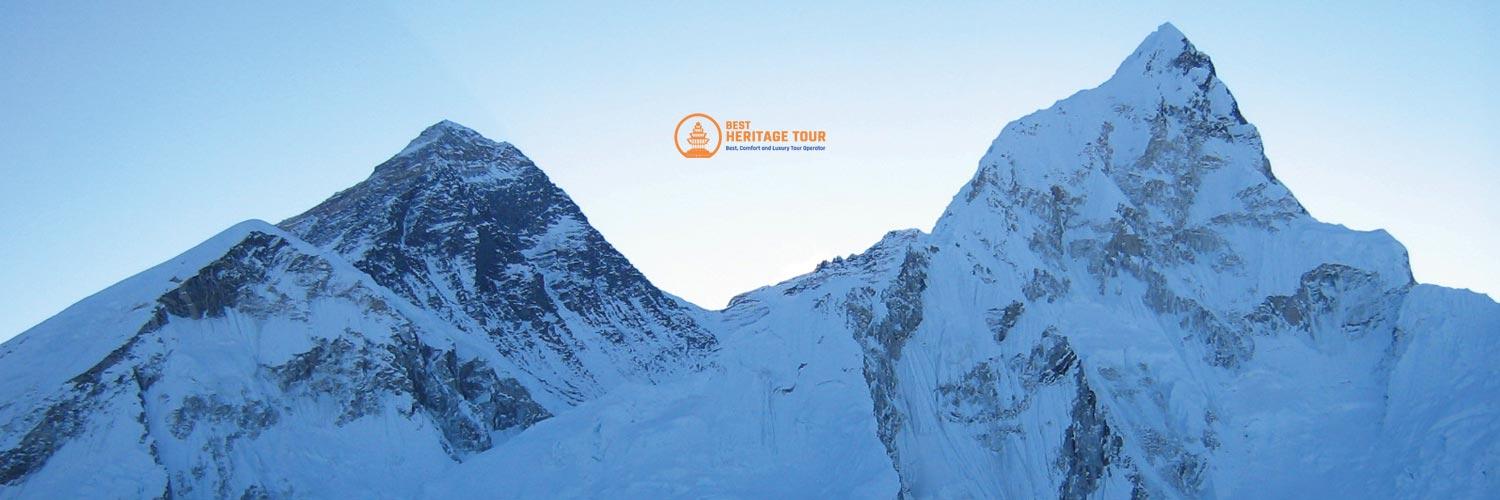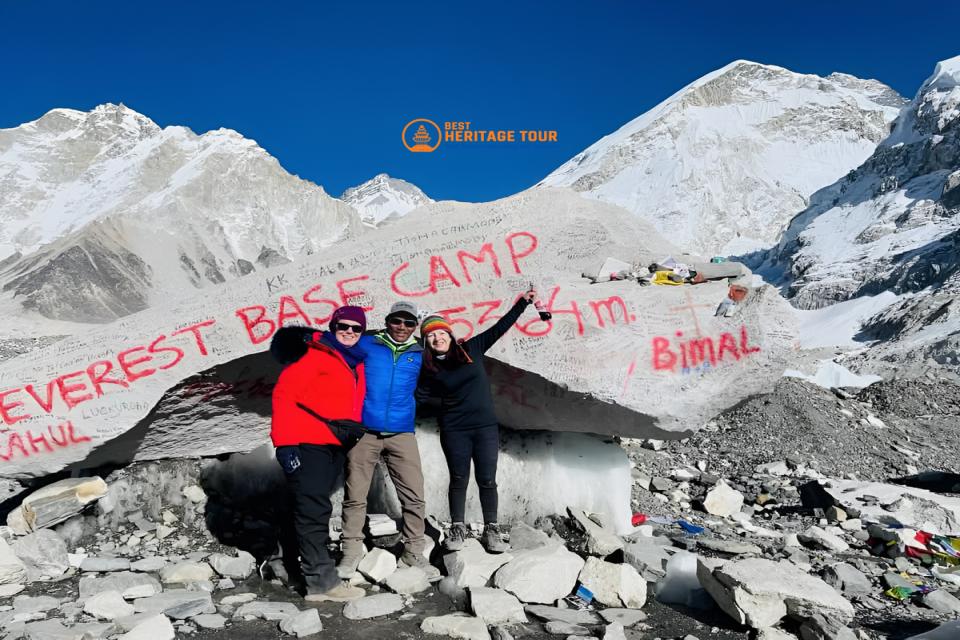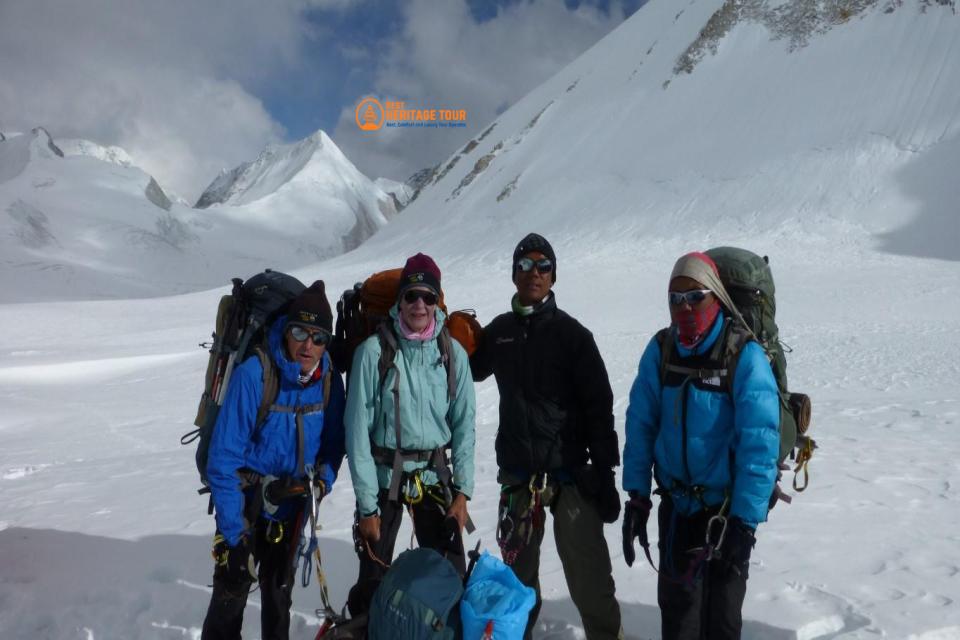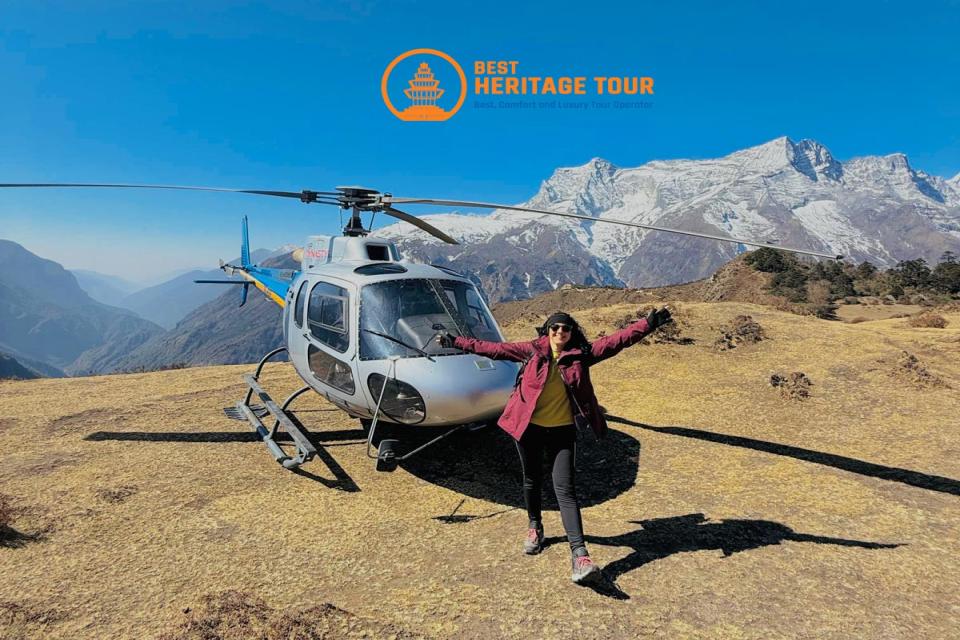At a staggering height of 8,848.86 meters (29,031.7 feet), Mount Everest is the highest mountain on Earth and one of the most iconic natural landmarks in the world. Known as Sagarmatha in Nepal and Chomolungma in Tibet, Everest is not only a destination for mountaineers but also a symbol of human resilience, determination, and the awe-inspiring power of nature. It has drawn adventurers, climbers, and trekkers from all over the world, seeking to conquer its towering summit or simply experience the beauty of the surrounding landscapes.
Where is Mount Everest?
Mount Everest sits at the border between Nepal and Tibet (China), towering above the Khumbu region in Nepal’s Sagarmatha National Park. This majestic peak is part of the Himalayan mountain range and marks the highest point on Earth. Its snow-capped summit is visible from miles away and serves as a reminder of the power and vastness of the Himalayas.
The mountain is located in the northeastern part of Nepal, within the Solukhumbu District, and can be accessed through Lukla, a popular gateway for trekkers heading toward the Everest Base Camp.
The Meaning Behind ‘Everest’
The name Mount Everest was given in honor of Sir George Everest, the British Surveyor General of India, who played a key role in surveying the region in the 19th century. However, in the local languages, it is called Sagarmatha (which translates to "Forehead in the Sky" in Nepali) and Chomolungma (meaning "Goddess Mother of the World" in Tibetan). These names reflect the mountain's sacred significance to the indigenous people of the region, who view Everest as a powerful spiritual entity.
Physical Characteristics of Mount Everest
Mount Everest is an imposing sight, with its rocky ridgelines, glacial fields, and steep faces. Its summit is constantly covered in snow and ice, which contributes to the peak's breathtaking beauty. The mountain is formed by layers of sedimentary rock, and its jagged ridges are surrounded by deep valleys and glaciers that add to the rugged landscape.
Key Facts about Mount Everest:
-
Height: 8,848.86 meters (29,031.7 feet) above sea level
-
Location: Border between Nepal and Tibet, in the Himalayas
-
First Ascent: May 29, 1953, by Sir Edmund Hillary (New Zealand) and Tenzing Norgay (Nepal)
-
Technical Challenges: Mount Everest is a notoriously difficult climb, requiring high-altitude climbing skills, rigorous training, and the ability to handle extreme cold, oxygen deprivation, and unpredictable weather.
Why is Mount Everest Special?
Mount Everest has long been a symbol of human determination and endurance. Its allure attracts climbers from all over the world who dream of reaching its summit and claiming the ultimate mountaineering achievement. But Everest is not just a peak- it is the ultimate challenge, requiring months of preparation, acclimatization, and overcoming extreme conditions.
Even if you don't aim for the summit, trekking to the Everest Base Camp is an unforgettable experience that allows you to witness the grandeur of the world's highest peak up close. The trek offers an unparalleled opportunity to connect with the Sherpa culture, pass through picturesque villages, and explore ancient Buddhist monasteries nestled in the Himalayas.
Climbing Mount Everest
Climbing Mount Everest is an achievement that requires world-class mountaineering skills, fitness, and resilience. It is often described as one of the most dangerous and demanding climbs in the world. The death zone above 8,000 meters presents a life-threatening challenge, where oxygen levels are so low that climbers must use supplemental oxygen to survive.
Everest has witnessed numerous successful summits, but it has also claimed the lives of many climbers. Famous routes such as the South Col Route (Nepal side) and the North Col Route (Tibet side) are the most commonly used, though they are fraught with dangers like avalanches, crevasses, and extreme weather conditions. Mount Everest also has a significant altitude sickness risk, making it essential for climbers to acclimatize carefully before attempting the summit.
Despite the challenges, many climbers continue to push their limits in the quest to summit this legendary peak.
The Surrounding Landscape and Ecosystem
The Everest region is home to a unique ecosystem that is as stunning as it is diverse. The surrounding landscape is dominated by glacial valleys, barren rocky slopes, and snow-capped peaks, with breathtaking views in every direction. The area is also home to some of the most remote and pristine environments on Earth.
The Sagarmatha National Park- a UNESCO World Heritage Site- covers an area of about 1,100 square kilometers and is known for its biodiversity, including species like the snow leopard, Himalayan tahr, and red panda. In addition to wildlife, the region is rich in plant life, with alpine meadows and rhododendron forests flourishing at lower elevations.
In addition to its natural beauty, the Everest region holds significant cultural importance for the local Sherpa people, who have lived in the shadow of the mountain for generations. Their strong spiritual connection to the land, coupled with their history as guides for Everest expeditions, makes the region a fascinating place to visit.
Trekking to Everest Base Camp
The Everest Base Camp Trek is one of the most iconic treks in the world, offering trekkers the chance to walk in the footsteps of mountaineers and see Mount Everest up close without having to climb it. The trek is accessible to individuals with good physical fitness and a love for adventure.
Starting from Lukla, the trek takes you through the Khumbu Valley, where you pass through picturesque Sherpa villages like Namche Bazaar, Phortse, and Pangboche. Along the way, trekkers are treated to stunning views of Everest and its neighboring peaks, including Lhotse and Nuptse.
As you approach Everest Base Camp, you will walk alongside glaciers and take in panoramic views of the towering mountain ranges. The trek is a unique opportunity to witness the daily lives of the Sherpa people, visit ancient monasteries like Tengboche Monastery, and experience the hospitality of the region's local inhabitants.
Everest’s Role in Mountaineering
Mount Everest is the pinnacle of the mountaineering world. Climbing its summit is the ultimate challenge, requiring exceptional skill, stamina, and mental toughness. The mountain has drawn world-renowned climbers for decades, and the Everest expeditions are an essential part of the history of mountaineering.
While summiting Everest remains the ultimate goal for many, the mountain's role in the history of exploration and adventure is also incredibly significant. The legacy of pioneers like Sir Edmund Hillary and Tenzing Norgay, the first climbers to reach the summit in 1953, continues to inspire future generations of mountaineers.
Conclusion
Mount Everest is more than just a mountain. It is a symbol of human ambition, perseverance, and the quest to overcome the most extreme challenges. Whether you are an aspiring mountaineer hoping to summit the peak or a trekkers looking to experience the Everest Base Camp, the allure of the world's highest mountain is undeniable.
For those seeking to explore the Mount Everest region, consider embarking on a journey with Best Heritage Tour, a trusted travel company that specializes in guided treks and expeditions to the Everest region. With our expert guidance and support, you can experience the grandeur of Mount Everest and the surrounding areas in a safe and enriching way. Best Heritage Tour ensures that you make the most of your Everest adventure, whether you're trekking to base camp or aiming for the summit.
Contact Best Heritage Tour Company
Visit Best Heritage Tour Pvt.Ltd. official website to gather information about BHT services.
Look for contact details:
Phone number/Viber /What’s App: +9779851149197 / +9779810043046
Email: bestheritagetour@gmail.com/ info@bestheritagetour.com to get in touch with them directly.
Author: Best Heritage Tour
Date: 9th April, 2025






